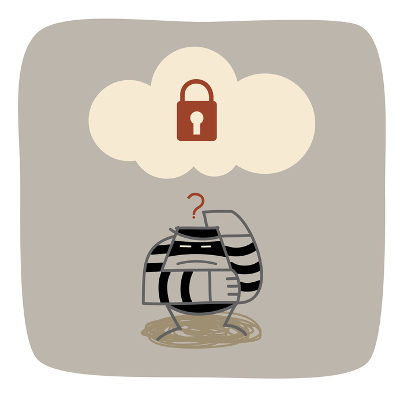Every now and then we read about high-profile hacks and security breaches, even at big name, large companies. We’re all at risk from cybercrime, and you need to take steps to make sure it doesn’t happen to you. Proactive measures aren’t hard to implement and it’s worth taking a bit of time to protect yourself from cybercriminals and online crime.
Keeping Ahead of Technology
The world of technology keeps changing the way people live and work. Cloud computing and other wonderful, internet-based innovations just keep coming. Alongside all these novelties and tools there are risks to security when using online platforms. The average user may not have the access to iron-clad protections that big corporations do, and may be vulnerable to identity theft and the hackers who keep developing new ways to access our online data and confidential information. Though cybercriminals are innovative and clever, so are the people who develop solutions to stop them making us victims of their schemes. Here are some basic precautions to take.
Password Protection
In 2007, when reliance on online resources was less than now, PC World reported on a study of web users, conducted by Microsoft Research. Average users had 6.5 web passwords that were shared across several websites, as well as around twenty-five accounts that required passwords. Some of those, such as those for online banking, are especially sensitive. Remembering all the passwords isn’t easy for anyone, and even though the risks have been well-publicized, many people still rely on one password for all their accounts.
This practice is potentially extremely risky. If your Xbox account is hacked, they will then be able to access your email account and bank details. They can then dig further and find a whole lot more information that could be useful to them. Using different passwords for different accounts is a simple measure but it goes a long way to fortifying your online data security.
Also, don’t store your passwords in a document file online, that hackers could get hold of. If you need a list, then you can’t go wrong by taking a technological step backward, using old-fashioned pen and paper and keeping your list somewhere safe. Pen and paper works, but sticky notes stuck all over your desk and monitor are not a smart idea. A technological solution that is easily available now is the password manager. It may be part of your antivirus software bundle, or you can take advantage of top-level encryption through services like LastPass and Roboform.
Manage Payments Securely
Most of use our bank card for all, or at least most of our purchases, online and in the real world. There are alternatives to this way of doing things. If you use Software as a Service (SaaS) you could consider using a separate card, with a low credit limit for that payment, so if the provider suffers a security breach you have some damage control measures in place. It might not be practical to pay every supplier you use with a different card, but if you separate the cards you use online for specific accounts you will have a slightly higher level of protection against online crime.
Nobody can afford to ignore the threats to online data security that exist today. A security breach at a major supplier can be a threat to all of its customers, so taking additional steps to protect yourself is essential, whether you’re representing a business or are concerned about your personal data security. Take online data security seriously for your business and for your own peace of mind.

